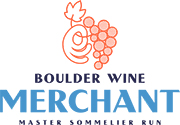Above: William Davis (right) of Wilson Daniels pours the much-sought-after wines of Olivier Bernstein at the Boulder Burgundy Festival 2014 Grand Tasting. More than 170 wines were poured at the event.
In 2013, Food & Wine executive wine editor Ray Isle, one of our favorite wine writers, asked “emperor of wine” and Wine Advocate founder Robert Parker, Jr. to revisit and reflect on some of his more famous (infamous?) pronouncements on wine over the arc of his career.
(Click here for Ray’s interview with Parker. It’s a fantastic read.)
One of the most controversial and frequently cited of these was Parker’s 2003 declaration that “Burgundy is, well, Burgundy. A minefield of potential disappointments beloved by elitists and pseudo-intellectuals who like to discuss ad nauseam growers and terroirs — not quality.”
Parker made a similar sweeping assertion in 2008 when he wrote in Bloomberg Business that “red Burgundy is the ultimate minefield of the wine world—notoriously unreliable, often disappointing, and rarely living up to its illustrious reputation.”
In direct response to Parker, New York Times wine critic Eric Asimov wrote, “in fact, the quality of Burgundy — red Burgundy in particular — has risen strikingly over the last two decades. From the smallest growers to the biggest houses, the standards of grape-growing and winemaking have surpassed anybody’s expectations. These days, Burgundy has very few bad vintages, and among good producers, surprisingly few bad wines.”
Today, seven years since the last back-and-forth between these princes of wine writing, the “minefield” myth has become so pervasive that you often see it quoted erroneously and out of context by mainstream wine writers, bloggers, and wine merchants as well as consumers.
In Ray’s 2013 interview with Parker, the über critic backpedalled only slightly.
“Thanks to a more meticulous younger generation,” he told Ray, “red Burgundies have made improvements, but they, too, are still a minefield, and top vineyard sites are still significantly overpriced.”
One of the driving factors behind the Boulder Burgundy Festival is to give attendees a sense of how much great Burgundy is available to them today.
At last year’s Grand Tasting, more than 170 wines were poured, all of them available in the U.S. and not a clunker among them.
The festival is now in its fifth year and it continues to grow. There’s no doubt that it takes encyclopedic knowledge to master Burgundy with confidence. After all, its mind-boggling parcelization is part of its allure (see this snippet from Parker’s buying guide).
But we are confident that the spectrum of wines poured is evidence of the new generation of Burgundy growers that Asimov and Parker both speak of.
We hope that you will come and taste for yourselves!









